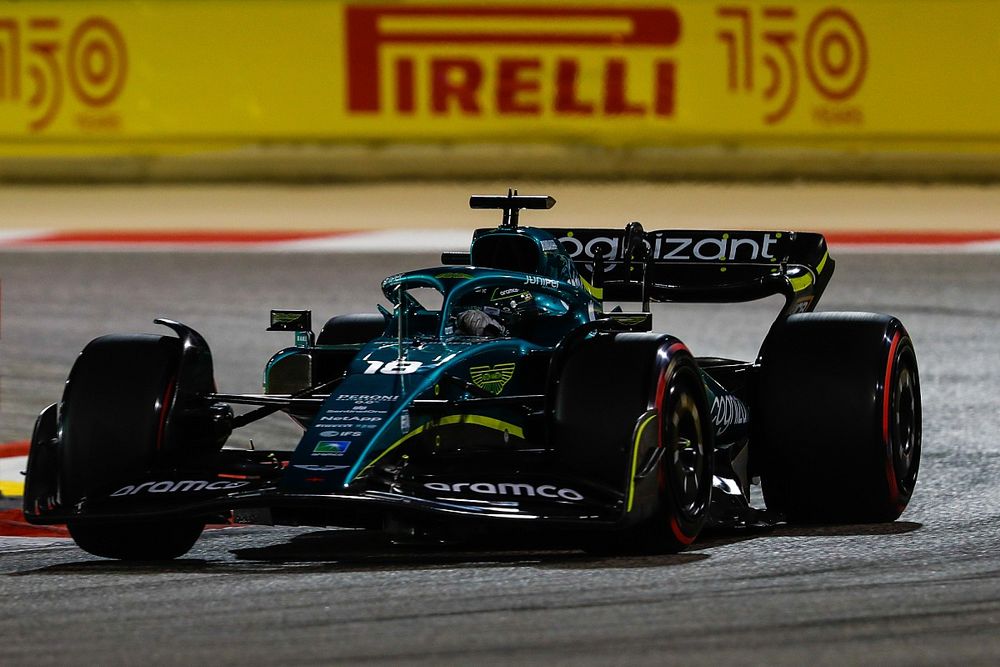Aston Martin losing up to 0.75s through F1 porpoising compromises
Aston Martin estimates that performance compromises it is having to make on its Formula 1 car to overcome porpoising are costing it up to 0.75 seconds per lap.

Photo by: Carl Bingham / Motorsport Images
The Silverstone-based team endured a frustrating first qualifying session of the season in Bahrain as both Nico Hulkenberg (17th) and Lance Stroll (19th) were knocked out in Q1.
It was a disappointing result for the squad as it had hoped to make some good progress up the grid this year.
However, the team has explained that its pace is currently being limited by the porpoising issue that a number of outfits have struggled with in the early running of the new F1 2022 cars.
Andrew Green, chief technology officer of Aston Martin, explained that by having to raise the ride height to stop the phenomenon, the team was costing itself downforce – and that translated to a big chunk of lap time.
Asked about how on top of the porpoising issue the team was, Green said: “I'd say we're still a way away from solving it the way we'd want to solve it.
“We've had to make quite a few compromises to the car and car setup to be able to run without it. But we tried some things [in practice], we tried some things in testing as well, and we're making, good progress."
Asked to estimate the impact of the compromises, Green said: “Currently, from where we are now, I'd say we're probably losing in excess of half a second, probably closer to three quarters of a second because of it. It's that sort of region.”

Nico Hulkenberg, Aston Martin AMR22
Photo by: Steven Tee / Motorsport Images
To put the time deficit in context, Hulkenberg missed the Q2 cut by less than three tenths of a second. A 0.75 seconds improvement would have put him in the top ten.
Teams have found that solving the porpoising problem requires a combination of aerodynamic and mechanical solutions, and Green concurred that work was needed on those two fronts together.
”It is a bit of both, you need the two to go together,” he said. “It's an aerodynamic phenomenon. We know where it's coming from, and what to do, but it's quite an involved aerodynamic change to solve the problem. So that's why it takes a bit of time.
“We can put patches on it and get rid of bits of it. But to do the whole thing properly, it does require a bit of a rework on the aerodynamics.”
Green suggested that it would likely take a little bit of time for Aston Martin to work its way to a final answer.
“I still think it's going to be several races before we end up with a solution that gives us the performance we need, and gives us the aerodynamic stability that we need to go with it," he said.
“It's a balancing act. We can drop the performance of the car, get rid of the porpoising, but that's no good, really. So we need to try and get both. And that's where we're trying to aim for the next event.
“We will make steps for the next event. But I think it's going to be a few races before we really get on top of it and get something that is really performing.”
Be part of Motorsport community
Join the conversationShare Or Save This Story
Related video
Subscribe and access Motorsport.com with your ad-blocker.
From Formula 1 to MotoGP we report straight from the paddock because we love our sport, just like you. In order to keep delivering our expert journalism, our website uses advertising. Still, we want to give you the opportunity to enjoy an ad-free and tracker-free website and to continue using your adblocker.



















Top Comments